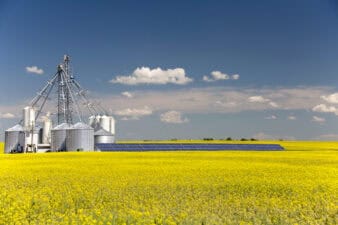Canadian pensioners are constantly searching for ways to get extra returns out of their savings while trying to avoid giving a part of the earnings to the Canada Revenue Agency (CRA).
All investors want to put more money in their pockets without being bumped into a higher marginal tax bracket. In the case of those who are receiving Old Age Security (OAS), they also want to make sure the additional income doesn’t trigger the OAS clawback.
The CRA imposes a pension recovery tax on OAS payments when net world income tops a minimum threshold. In 2020, that number is $79,054. The tax is 15% on each dollar of income earned above this amount.
One way to boost income while making sure it doesn’t count towards the CRA clawback calculation is to generate the earnings inside a Tax-Free Savings Account (TFSA). The TFSA limit increased by $6,000 in 2020, and each Canadian resident now has as much as $69,500 in contribution space.
That means a couple could invest $139,000 and earn tax-free returns that wouldn’t push them into a higher marginal tax bracket or put OAS pensions at risk.
What investments are attractive?
Top-quality dividend stocks tend to be popular picks for generating income. The yields are better than what you get from GICs, and investors can benefit from capital gains if the share prices increase.
Let’s take a look at two high-yield stocks that might be interesting choices right now for an income-focused TFSA portfolio.
Inter Pipeline
Inter Pipeline (TSX:IPL) is a niche player in the Canadian midstream energy sector with oil sands pipelines, conventional oil pipelines, and natural gas liquids (NGL) processing facilities. The company also owns a bulk liquids storage business in Europe with terminals located in several countries in the region.
Last summer, the management team indicated it would consider a sale of the European assets to help fund the Canadian capital program. IPL is building a $3.5 billion polypropylene plant that will turn propane into raw material plastics. The Heartland Petrochemical Complex, as it is known, is expected to generate average annual EBITDA of at least $450 million once it goes into service in late 2021.
IPL stock is down on concerns it might have to take on too much debt to get the facility completed. Any news of an asset sale would likely drive the share price higher. A takeover at a much higher level is also a possibility.
In the meantime, the dividend is adequately supported by existing cash flow. The payout ratio through the first nine months of 2019 was about 80%. The current payout provides a yield of 7.9%.
CIBC
Investors often overlook Canada’s number five bank when choosing a financial institution for their income portfolios, but that might be a mistake. Canadian Imperial Bank of Commerce (TSX:CM) (NYSE:CM) is making good progress on its strategy shift to diversify revenue and income outside of Canada.
The company spent more than US$5 billion in the past couple of years to buy businesses south of the border, and the CEO has indicated additional deals could be on the way, especially in the wealth management segment. CIBC generated about 17% of adjusted profits in the United States in fiscal 2019. That helps balance out the risks associated with CIBC’s heavy exposure to the Canadian housing market.
The bank has a strong capital position that should ensure it can ride out tough economic times, and the dividends should be very safe. CIBC maintained the payout through the Great Recession.
At the time of writing, the stock appears cheap, and investors can pick up a 5.2% yield.
The bottom line
CIBC and IPL pay attractive dividends that should be safe. These stocks, along with a number of other top TSX Index dividend payers, could easily create a portfolio that yields an average of 6%.
This would generate $8,340 per year for a couple with TFSA investments of $139,000. That’s an extra $160 per week in tax-free income that won’t put OAS pension payments at risk!








